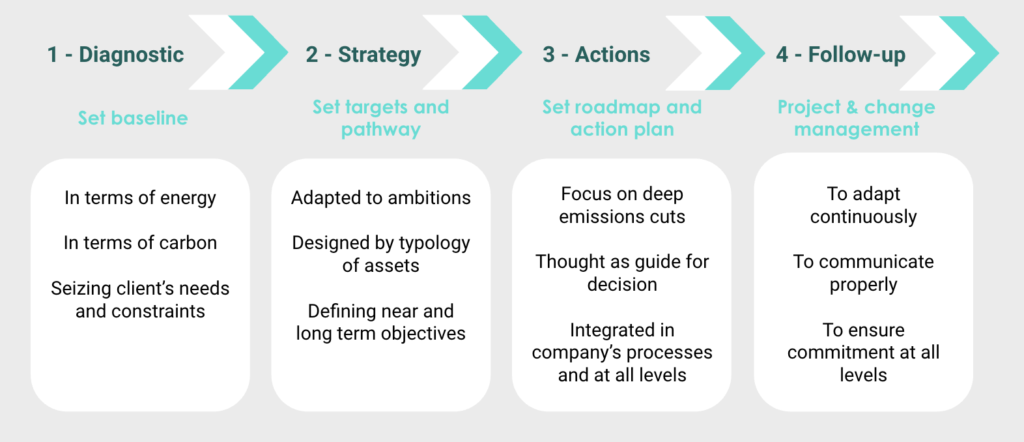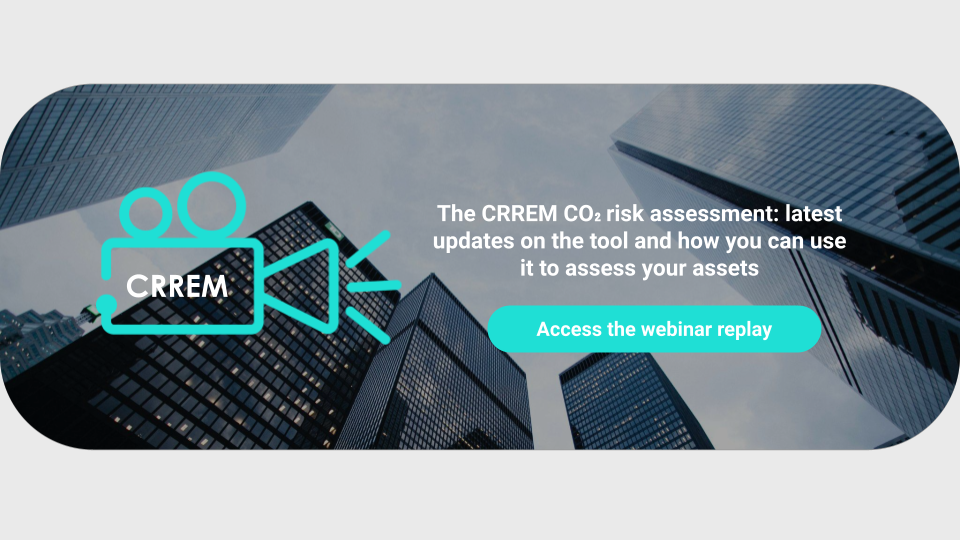Rising CO2 emissions caused by human activity are increasing global temperatures. If the average global temperature rises +1.5 C above pre-industrial levels, the global economy will have to absorb a cost of $54 trillion by 2100.
According to the IPCC, emissions outcomes of current mitigation ambitions in line with the Paris Agreement, known as Nationally Determined Contributions or NDCs, would result in global warming higher than 1.5°C above pre-industrial levels, even if emissions reduction ambitions are scaled up rapidly after 2030.
There are many different climate-related scenarios for organizations to consider depending on the targets they want to reach, ranging from low carbon transition to fossil-fuel intensive. Additionally, several initiatives and institutions have mapped out various reference trajectories. The variety of options can help with choosing a pathway, although it can create confusion with understanding which steps and actions are needed to reach your objectives and selecting the most relevant option.
Here are some tips for figuring out your approach to carbon pathways.
Carbon trajectory: a step in the portfolio temperature alignment
To achieve a specific target, a temperature alignment must be put in place. Generally speaking, portfolio temperature alignment methodologies quantify the gap between portfolio climate performance and one or several reference decarbonization trajectories and carbon pathways.
The temperature alignment assessments comprise of four general steps:
Step 1. Measuring the climate performance of the portfolio (carbon footprinting, green share, climate scores, etc.)
Step 2. Choosing one or several climate-related scenarios;
Step 3. Converting Carbon pathways to temperature alignment micro-benchmark(s)
Step 4. Comparing climate performance with benchmark
Carbon trajectory is a key step, among others, in the complex process of setting a GHG reduction target. These four steps can help you better visualize the process as a whole:

See also: “Breaking down carbon accounting”
From scenarios to carbon pathways
A scenario is an allocation of a given carbon budget over time. It answers the following question: how can a temperature target be reached, under different constraints and assumptions, by distributing carbon emissions on a temporal, geographic, and/or sectoral basis? Simply, it models a hypothetical specific worldview, which means that for the same scenario, several trajectories can lead to the same projected temperature rise, each embedding different hypotheses, such as technological choices, efficiency, and sobriety. The trajectories resulting from each scenario differ on several elements: the intensity and decarbonization rate of the economy, the year and amount of the carbon peak, and the time horizon at which the trajectory will reach net zero.
The choice of the scenario is usually influenced by practical considerations. Most data providers and investors rely, where possible, on sector-specific trajectories using scenarios that have a relevant level of data granularity for the perimeter chosen.
See also: “Data management: what strategy should you implement for your property portfolio?”
There are three distinct categories of climate-related scenarios:
- “Transition scenarios” include plausible socioeconomic and technological trajectories that lead to different carbon emissions and concentration levels.
- “Climate change scenarios” model the impact of these different levels of carbon emissions and concentrations on the climate, for example in terms of temperature rise.
- “Climate impact scenarios” explore the potential impacts of climate change on socio-economic systems, for example in terms of the financial and human costs attributable to the increase in occurrences and magnitude of extreme weather events in a 3°C world.
What frameworks are available to define the emission reduction pathway?
Data availability and granularity are critical elements in the development of carbon pathways. Therefore, portfolio temperature alignment methodologies usually rely on institutional frameworks, such as the IEA (International Energy Agency) scenarios and trajectories. Some methodologies use the IPCC trajectories (SBTis). The main methodologies include SNBC, ISO Standards, CDP, and ACTs, and the IPCC trajectories (SBTis) are also used
Let’s take a closer look at the Science Based Targets Initiative methodology. According to this framework, three methods can be used to derive a science-based target with1.5° alignment.
The sectoral decarbonization approach (SDA) is based on the 2°C scenarios of the IEA (ETP B2DS 2017) and requires companies of the same sector to have their emissions intensity by a unit of production converge by 2060. Target emission intensity varies based on company base year emission intensity, projected activity growth, and sectoral budget. When it comes to the GEVA approach, companies are required to reduce their greenhouse gas emissions per value added by 7% per year (compounded). This method is acceptable only if it leads to absolute emissions reduction. Lastly, the absolute contraction sets that organizations must reduce their absolute emissions at the same rate, irrespective of initial emissions performance by 2.5% minimum.
Deepki Ready can assist you in each of these frameworks including the Real Estate specific CRREM, a methodology based on SBTs that allows investors and property owners to assess the exposure of their assets to stranding risks based on energy and emission data and the analysis of regulatory requirements. CRREM is integrated into Deepki Ready to monitor CO2 emissions reduction targets and project consumption based on historical data. The module enables you to project energy consumption and monitor emissions targets.
When in doubt, educate yourself
To reach its climate targets, EU building emissions will need to be reduced by 29% by 2030 and 100% by 2050. The different available scenarios distribute the available carbon budget over time along different trajectories that, if implemented, would lead to reaching the GHG reduction target. From sector-specific trajectories such as CRREM, organizations can derive benchmarks that will allow them to assess their temperature alignment by comparing it to their actual climate performance.
In practice, there’s no ideal carbon pathway methodology to be followed, stakeholders face a range of trade-offs based on data availability. This further amplifies the need for overall education on the subject, but also for strategies and alignment between stakeholders to better implement their ESG strategy.



